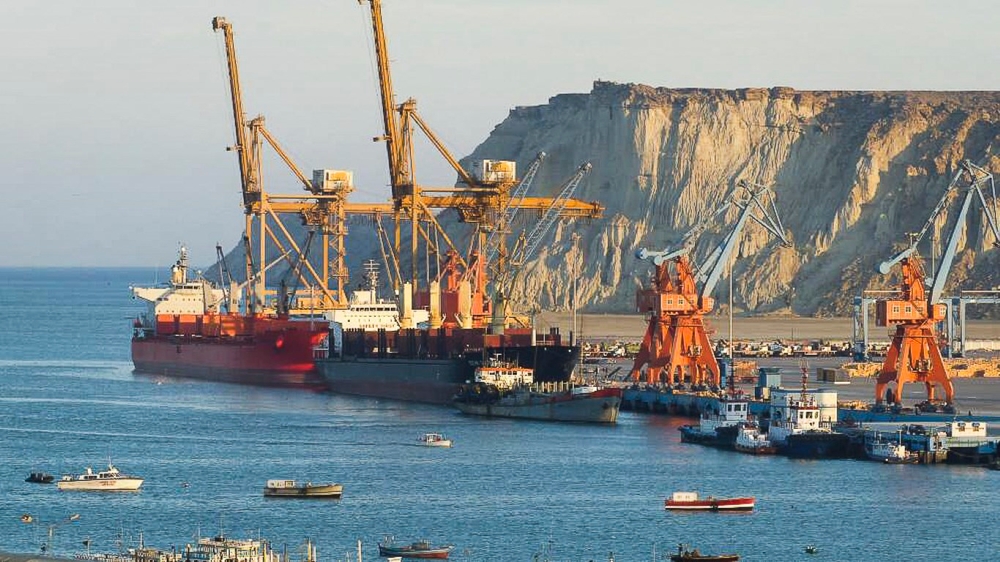Published
- 4 min read
Gwadar and CPEC: A Critical Examination of Unrealized Potential

The Grand Vision Behind Gwadar’s Development
The China-Pakistan Economic Corridor (CPEC) was launched with ambitious goals, positioning Gwadar as its centerpiece. A port city in Pakistan’s Balochistan province, Gwadar was to become a vital hub connecting China’s Xinjiang region to global markets. By developing infrastructure such as the Gwadar Port, highways, and pipelines, China aimed to bypass the strategic vulnerability of the Malacca Strait while offering Pakistan an opportunity to uplift its poorest province.
Despite its strategic location and potential, Gwadar’s journey under CPEC has been riddled with missteps. Far from achieving its intended status as a thriving trade hub, the city reflects the broader challenges of China’s Belt and Road Initiative (BRI), marred by unrealized promises and growing local dissent.
Unmet Promises of Economic Transformation
The development of Gwadar under CPEC was projected to generate 2 million jobs for locals and inject significant investment into Balochistan. However, official data reveals that less than 250,000 jobs have been created, leaving the local population disillusioned. Instead of fostering local economic growth, Chinese enterprises dominate the projects, with little involvement of Balochi firms.
The influx of Chinese workers and displacement of local communities have further strained relations. These developments, combined with a lack of basic infrastructure such as clean water and electricity, have fueled protests. Local resentment stems from the perception that Gwadar’s resources are being exploited without any tangible benefits to its residents.
Security Concerns Undermine Investment
Security remains a pressing challenge. Separatist groups in Balochistan, particularly the Baloch Liberation Army, have targeted Chinese entities, accusing them of exploiting local resources. High-profile attacks on Chinese nationals and infrastructure have deterred private investment, a critical component for CPEC’s success.
China and Pakistan have responded with security measures, including surveillance systems and fenced-off zones for Chinese workers. However, these actions have deepened the divide with locals, who view these measures as further marginalization. Without addressing the underlying grievances of the Baloch people, these security strategies risk exacerbating tensions.
Structural and Strategic Flaws in Gwadar Port
Gwadar Port, often compared to global hubs like Dubai, has failed to live up to its promise. Operational since 2017, the port has handled only a fraction of the cargo processed by regional counterparts. This underperformance can be attributed to a lack of transportation links and limited capacity. With only three berths compared to Karachi’s 33, Gwadar lacks the infrastructure to attract significant maritime traffic.
Moreover, restrictions on local fishing, a key livelihood in Gwadar, have ignited protests. While Chinese trawlers operate freely, local fishermen face stringent government-imposed constraints. This disparity has amplified feelings of economic and social exclusion among the local populace.
An Unsustainable Business Model
The revenue-sharing model of CPEC projects in Gwadar has also drawn criticism. With China claiming 90% of the earnings, the Pakistani government retains little, leaving provincial and local authorities with virtually no financial benefits. This imbalance has eroded local support and intensified opposition to the projects.
The Way Forward: Addressing Core Issues
For Gwadar to realize its potential, a fundamental shift in strategy is required. China and Pakistan must prioritize inclusive development that directly benefits local communities. This includes:
- Empowering Local Stakeholders: Increasing local participation in project execution and revenue-sharing mechanisms to ensure tangible benefits for Balochistan’s residents.
- Infrastructure Development: Investing in transportation links to integrate Gwadar with Pakistan’s broader economy, making the port more attractive to international trade.
- Addressing Security Through Inclusion: Tackling local grievances through dialogue and sustainable development rather than solely relying on military solutions.
- Transparency and Accountability: Ensuring that new CPEC initiatives are subjected to rigorous planning and stakeholder consultation to avoid repeating past mistakes.
Conclusion
Gwadar’s trajectory under CPEC serves as a cautionary tale for large-scale infrastructure projects. Its current state reflects a disconnect between lofty ambitions and on-ground realities. Without addressing the socio-economic and strategic challenges that have hampered its progress, Gwadar risks becoming a symbol of unfulfilled potential rather than the beacon of prosperity envisioned at the start of CPEC.
By focusing on equitable development and fostering trust with local communities, China and Pakistan can still transform Gwadar into a success story. However, this requires a paradigm shift from prioritizing optics to delivering meaningful outcomes.
